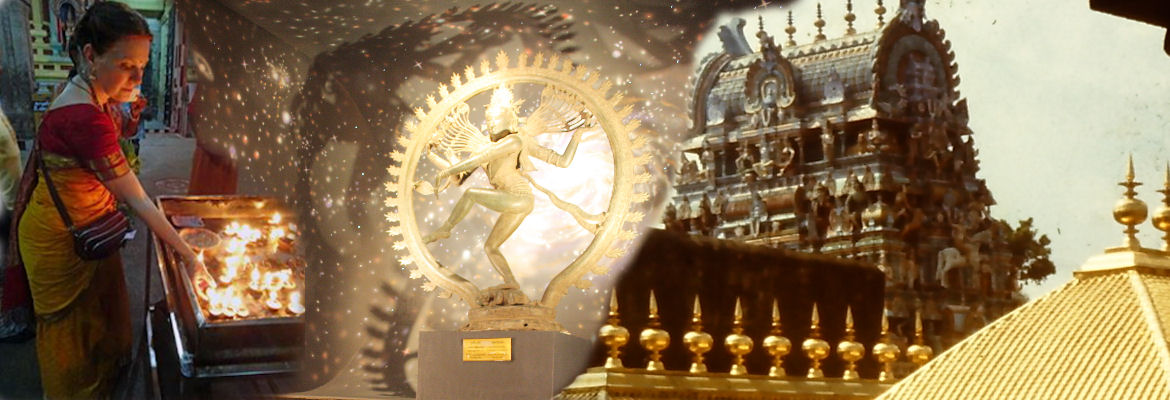The earliest textual reference to the sphinx of India is found in the Yajur Veda. The earliest known depictions in stone of sphinxes are found in central and north-west India and date to the 1st century BCE till the 2nd century CE. They are found among the decorations of Hindu, Buddhist and Jain shrines. And they show distinct Hellenistic influences especially in that they often have wings of the type typical of Greek sphinxes.
The earliest dated example of a sphinx in southern India is found among the sculpture in Mamallapuram. In the 6th and 7th century kings of the Pallava dynasty experimented in the vicinity of this ancient port with various architectural and sculptural forms.
The domination of the Pallavas was eclipsed in the 9th century by the Chola kings, whose centre of power lay in the delta of the Kaveri river. The Cholas dominated southern India for over four centuries and made generous contributions towards the temples and towards the arts, generating some of the greatest treasures of human civilization. It was in the temples constructed and supported by them that we find many of the early sphinx sculptures.
In this period the main characteristics of the purushamriga are lion bodies, with mane, and only a human face, with elongated ears. A few are depicted crouching, and in pairs. Most are striding or jumping. During this period we also see occasionally purushamriga that have the lower body of a lion, with the upper body of a human being, and are shown half up-right. Often they are engaged in the worship of the Shiva Linga with a lamp and a bell. Many of the depictions are narrative panels relating the story of the chase of Bhima by the purushamriga from the Mahabharata.
After the fall of the Chola dynasty various dynasties dominated different parts of Southern India, till the kings of Vijayanagara, modern Hampi in Karnataka, became the emperors of the South. In temple architecture of this period we also find many depictions of the purushamriga. By this time most scultures show the Indian sphinx with the lower body of a lion and the upper body of a human being. They are depicted as rishis or seers, as described in the Mahabharata story. With long matted hair knotted on top of their head. Moustaches and long beards, elongated ears with disks. Many are shown worshipping the Shiva Linga.
The final phase of artistic development in southern India took place under the Nayakas. This was a dynasty that owed alliance to the emperors in Vijayanagara, but ruled from Madurai. Their sculptors developed the concept of the sphinx-human beast into a fully upright man with lion’s hips, legs and claws. These imposing life-size sphinxes are also depicted as rishis.
In other parts of India we also find sphinxes depicted in the various local artistic idioms. In the temples of Orissa, for instance in Konarak, Banpur and Garudipancana, besides the half upright lion-human sphinxes, we find the sphinx also as an upright being with a human body, lion’s claws for legs, feet and hands, and human head with fangs. Here they are called Nara-virala.
Among the sculpture of the terracotta temples of Bengal we find the half-upright human-beast sphinx-type.
Temples build during the medieval period in central India have depictions of the sphinx with lion body and human head.
Sri Lanka is also included in the cultural sphere of the South Asian subcontinent. Sphinxes have been found among the artifacts included in the foundation deposits of Buddhist shrines and have been depicted on banners belonging to various religious institutions. They are also found among the sculptural art of the island.
One final appearance of a purushamriga worth mentioning is found in one of the courtyards of the 18th century Prasad Phra Thepidon palace at Wat Phra Kaew, Bankok, Thailand. It is in form reminiscent of some of the purushamriga lamps used in Shiva temples for the ritual with the lamp. This one is female and is called a Nora Nair.
Besides stone sculpture we also find metal, wooden and ivory forms of the purushamriga. The metal forms are the purushamriga lamps used for the daily rituals in Shiva temples. Purushamriga carved from wood include the vahanas or vehicles used for the processions during festivals. I have also found carvings of purushamriga among the sculpture of several temple chariots, which are used for processional rituals during temple festivals. Ivory throne legs from Orissa, exhibited in the Museum für Indische Kunst in Berlin, include purushamriga among the many animals depicted.
On the basis of the materials I have collected so far, the conclusion that presents itself at this stage of my research is that the sphinx-purushamriga was part of the doctrines and the art in India from Vedic times onward. Within the various art styles, three basic types can be distinguished. The crouching sphinx with mane and elongated ears. This possibly belongs to the earliest depictions in the specifically Indian artistic idiom. Striding and jumping sphinxes with only human faces also belong largely to early phases. The half upright lion-human figures generally seem to belong to somewhat later to much later phases of development. The fully upright life-size purushamriga represent the final phase of the artistic development of the sphinx in Indian art.
After the early stages of art in north and central India, there is no further evidence for Hellenistic influence. It is therefore possible to conclude this influence was temporary and only relevant with respect to the style of depiction, and did not pertain to or reflect on the concept of the sphinx as such.
